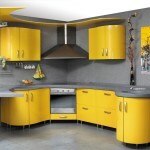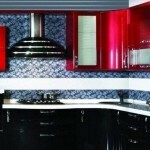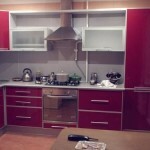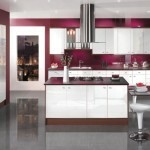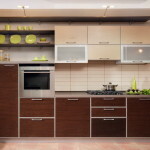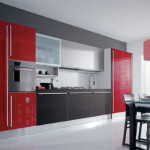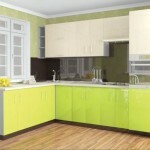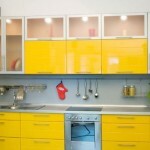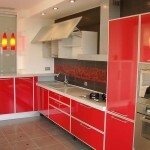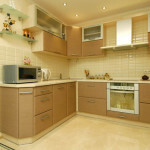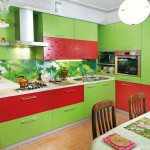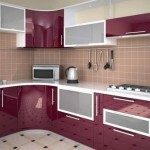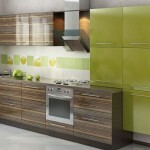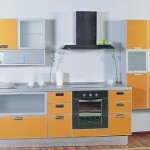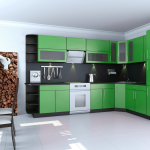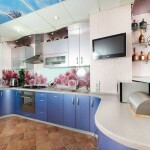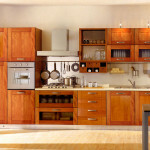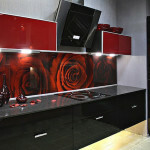Plastic facades (30 photos). Features articles from chipboard, MDF and solid wood. Production and vendors
Table of contents
- 1 What it is
-
2 What are the facades
- 2.1 chipboard
- 2.2 MDF
- 2.3 array
- 2.4 alternatives
- 3 Production and vendors
-
4 material Features
- 4.1 dignity
- 4.2 disadvantages
- 5 A little more about the facades and plastic
- 6 conclusion
- 7 Photo Gallery
Do you think that is a plastic facades with aluminum edge? Imagination immediately drawn plastic-coated building with aluminum uprights and crossbars, right?
Alas, the plastic are not popular with the external design of buildings. The theme of this article - furniture fronts.
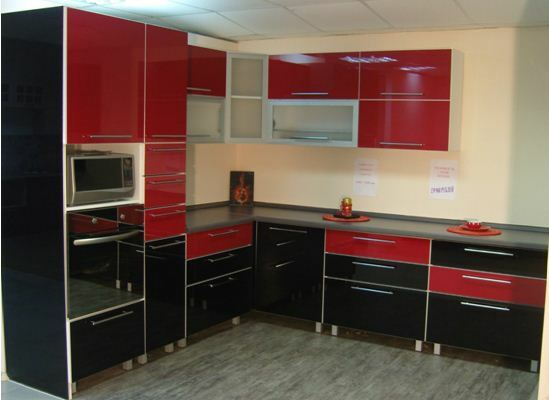
Under plastic facade is most often understood as the front wall furniture set
What it is
A century ago it was the art of carpentry art, highly specialized manual labor. Carpenter needed to know the properties of wood and use it in a way that created furniture retains its appearance for a long time and look attractive.
Now, unfortunately, there is not much skilled carpenters. Most of the furniture is made of factory. The material used to create it is most commonly used DSP - pressed sawdust with glue.
Why them?
- Particleboard is immeasurably cheaper to produce compared to the dried properly flat board with a beautiful texture. Because chips can be produced with little or no waste - and from the butt, and from the knots, and from the slab. Actually, she is a waste product.
- Chipboard is not prone to deformation when humidity fluctuations, even more important. Furniture from it will not lead to the wet weather.
Note! This does not mean that the particle board has low hygroscopicity. On the contrary, it is easy to swell, but evenly throughout the volume.

Chipboard - a relatively inexpensive and easy to process material
However, apart from bare functionality, furniture possible, should have also a good appearance to fit in with the design of a kitchen or other room. First of all, it concerns facing the "viewer" part of any suite of furniture - the facade.
That is why the practice decoration of facades with plastic, glass, metal and other materials.
What are the facades
Plastic facade - certainly not the only option. Let's have a brief overview of the materials used.
chipboard
The same laminated particleboard that is used for the manufacture of walls and shelves Furniture.
Here, in turn, there are several options:
-
Stove sawn to size, after which the masked edge of the edge strip. These facades are the most cheap to produce, but not very beautiful and impractical - tape often comes unstuck.

In addition, the hygroscopic particle board is not conducive to long life of the facade on the wet kitchen. But in the living room - please
- Softforming - another method chipboard processing that involves milling the ends. They are selected groove in which glue or just a great effort inserted plastic tape soft edging.
-
Finally, postforming - treatment in which the dam (fillet) is formed on the edges.
This treatment is carried out before facing chipboard. Furthermore, for decorative covering in this case it is not applied film, and special plastics for facades - HPL.
The coating has a thickness of 0.6 - 0.8 mm and makes the construction very strong in relation to mechanical stress. Lack postforming - the fact that only the parts are made in standard sizes, widths 300.400, 500 and 600 mm.
MDF
The material differs from chipboard primarily smaller size wood particles. In fact, MDF is more dense hardboard version with much greater thickness.
The material can be used for furniture facade one of two ways:
-
From it is made the frame of the facade element. When this door panel (the inner part, edged frame) can be made of other materials: glass, bamboo or chipboard.
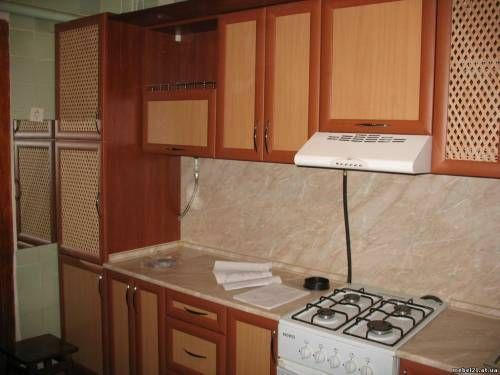
The photo frame is made of MDF furniture fronts
-
The design is completely made of MDF. Moreover, its appearance, surface abrasion resistance and mechanical strength coated determined used.
What are my options?
- Film are those facades that have MDF glued decorative film. It may be not just a thin colored layer, it is possible to use embossed films, texture imitating wood or fabric.
- The application of paint will give a surface that looks good. This finish is easy to be painted in the color you want with your own hands with automotive enamel.
- The outer layer may be pasted on top of the veneer MDF, including precious wood.
- Facade plastic fabrication technique involves gluing MDF and high strength adhesive plastic sheet, followed by plastic fastening edges with glue.
However, the more popular of acrylic plastic facades with aluminum edge.
array
Finally, the facades of the array at least outwardly look the same as the production of carpenters of the last century. Manufacture of wood requires a fair amount of manual work and fit the picture texture, so the facade of the price is quite high.
Somewhat reduces the final cost of manufacturing panels cheaper and more technologically advanced in the production of materials - MDF and particle board with wood decoration. Of course, look at this not getting any better.
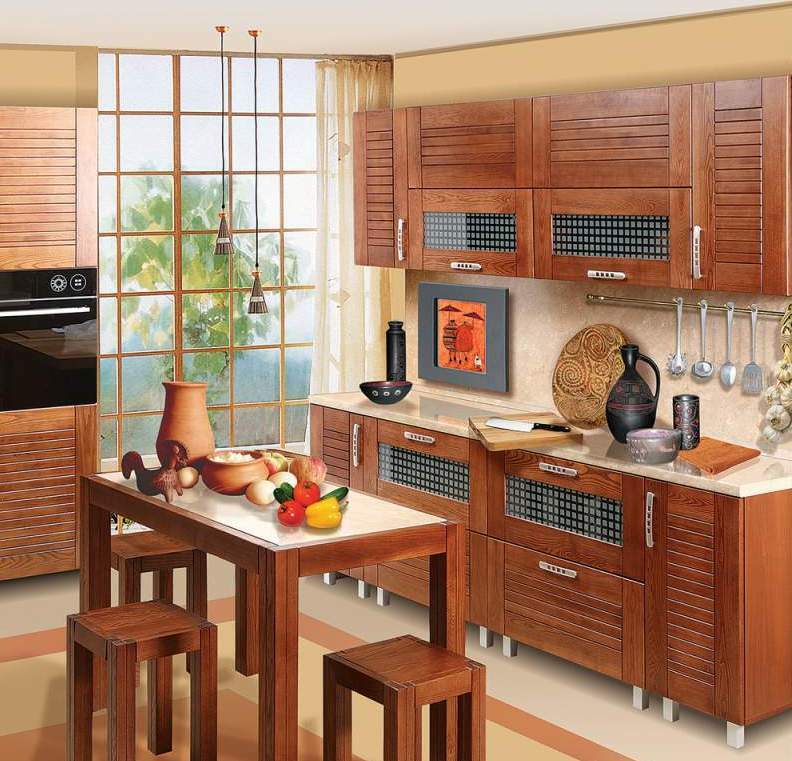
Until recently it was the only way to make furniture. Now - expensive exotics
alternatives
In order not to miss anything, we will mention a few types of furniture fronts.
- Aluminum frame with glass or mirror inside.
- MDF, covered with imitation leather.
- Stainless steel - smooth or embossed.
- Plastic with aluminum frame, without the support of other materials.
Production and vendors
As already mentioned, the production of plastic facades no special difficulties does not represent. Instruction is simple: take a rigid base made of chipboard or MDF and glued plastic. The ends may be covered with skirting tape or edged aluminum.
As you might guess, consumer quality furniture fronts depends primarily on plastic.
What manufacturers are present on the Russian market?
-
Facades of plastic Arpa characterized by the widest possible range of colors, the order comes absolutely any decor, from simple to complex patterns of colors with fanciful relief. Another advantage Italian acrylic plastics under the brand Arpa - slightly higher as compared to competing offers temperature resistance that demand especially in the kitchen. Thickness - 0.7 - 1.2 mm, the sheet dimensions - 3000h1300 mm.
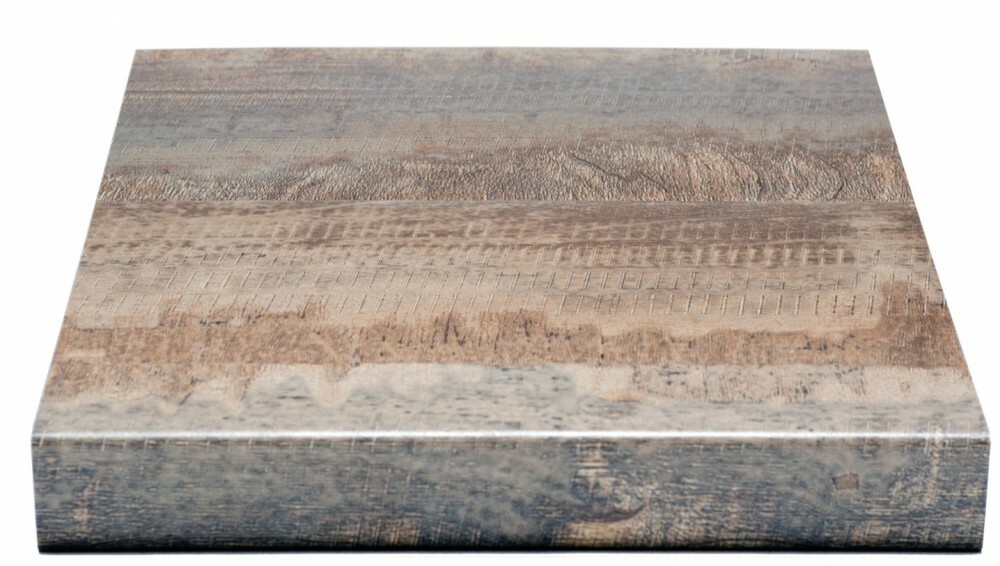
In the photo - faced Italian plastic countertop
- Resopal - acrylic plastic facade is originally from Germany. The manufacturer's range present an interesting solution - glossy decoration on a matte background. The dimensions of the sheet are the same, the thickness ranges from 0.8 to 1 mm.
- Duropal - another German company that produces plastic facade. There are curious large sheet size: 4100 by 1300 mm with a thickness of 0.8 - 0.9 mm.
-
ASD - Turkish manufacturer offering plastic on the facades at prices somewhat lower than in Europe. Among the products there are matte decors, supplied in rolls of 100 meters long.
They allow you to create items of furniture fronts and countertops with dimensions limited only to the dimensions of the room.
Curious: all the listed plastics - acrylic. However, plastic profiles for facades kitchens uses less plastic and more durable PVC. It is, however, still has a lower temperature at which begins to soften - about 100 ° C against 160 from acrylic.
material Features
dignity
- Acrylic coating is quite resistant to mechanical stress. Small scratches can be zapolirovat.
- Lined with plastic facade is not afraid of moisture.
- Color and gloss are not lost over time.
- Material hygienic. It does not breed bacteria, and it is easy to clean.

With careful handling facade retain gloss for decades
disadvantages
- Hot pan easily oplavit coating.
- Abrasive cleaners and aggressive household chemicals - banned. They will leave marks on the glossy surface. Wash the facade have only soapy water.
- Glossy surface is easy to fingerprints. Wipe the furniture will have to quite often.
A little more about the facades and plastic
Well, what the facades of buildings (see. than decorate the facade of the house)? Really for them tiles of plastic does not apply at all?
Unfortunately no.
Facade plastic tiles would be quite impractical material for a variety of reasons:
- The relatively high cost. Durable plastic considerably more expensive than granite or fiber cement.
- Low surface strength. Glossy plastic facade tiles would very quickly acquired an unkempt appearance due to wind erosion surface.
Plastic (or rather, vinyl) is used to finish the façade with their hands primarily in the form of a siding. The small thickness and complex shape provides a low cost in manufacturing and strength. The surface at the same siding, usually matte.
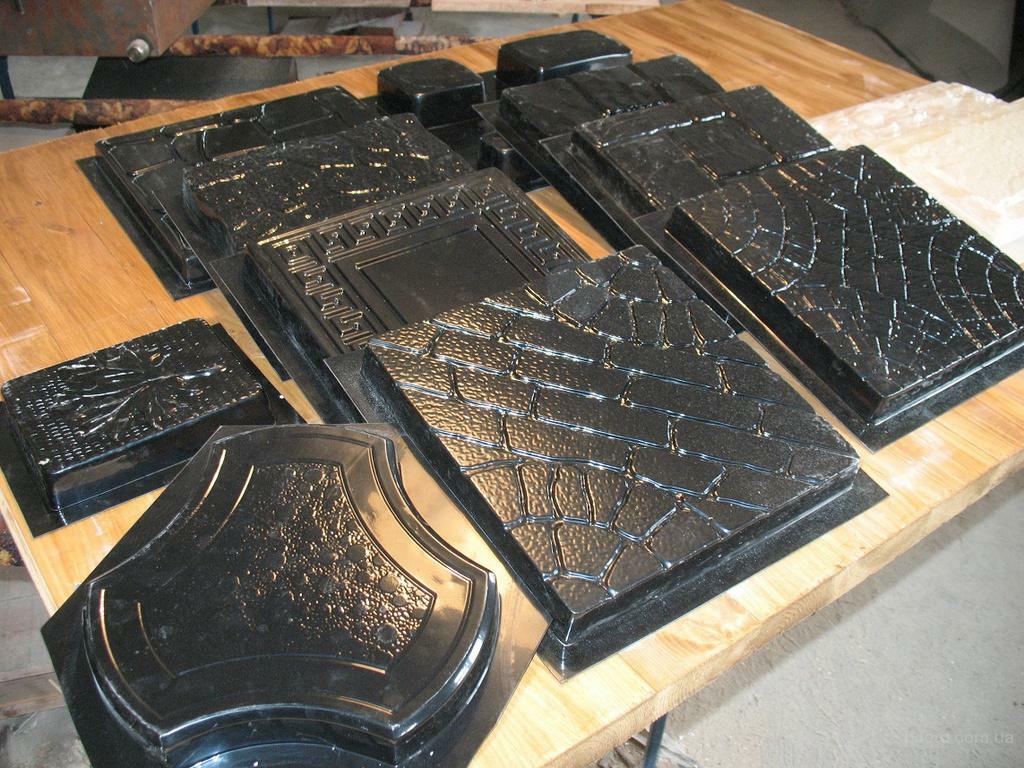
Make no mistake: this is not the tile. Only the form for its production of concrete
conclusion
For more information about how plastic facades with a blockage look and apply, you will find in the video at the end. Success in creative work!
Photo Gallery

